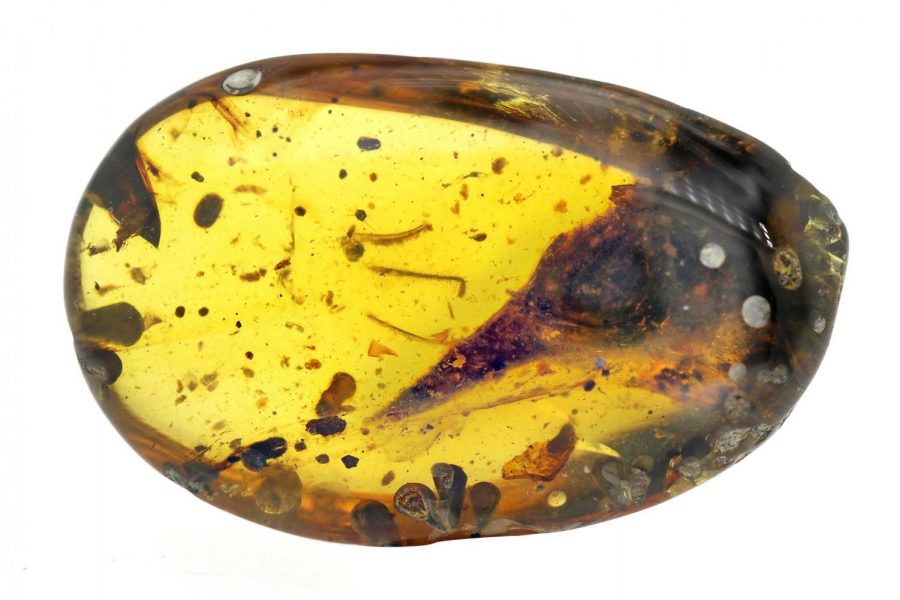Smallest Known Dinosaur’s Fossil Discovered
The smallest ever dinosaur was discovered in an amber fossil from Myanmar. The 99 million-year-old creature’s skull was found in fossilized tree resin and measures about 1.5 centimeters long from the back of the head to the tip of the snout. According to National Geographic, “The skull’s proportions suggest that the animal was about the same size as a bee hummingbird, which would have made the newfound dinosaur lighter than a dime.” Despite its tiny size, this minuscule skull has had a large impact on scientist’s vision of what the prehistoric world was like.
One of the things that makes this dinosaur so remarkable is its unique array of features. Thus, scientists called the bird Oculudentavis khaungraae, based off the Latin words for eye, tooth, and bird. Oculudentavis’ first notable feature is its feathery wings. Due to its close relation to the distant cousins of modern birds, Archaeopteryx and Jeholornis, researchers suspect that, similar to these feathered dinosaurs, it had feathery wings. Unfortunately, researchers are limited by what little fossils they have, so it is undetermined if the prehistoric creature had the ability to fly. Oculudentavis’ next significant feature is its teeth. Oculudentavis has an upper jaw lined with forty sharp teeth, unlike birds today. Its last striking feature is its eyes. This tiny dinosaur had large eyes that, according to National Geographic, were, “…suited for spotting prey in foliage…” The combination of these features has shed new light on the evolutionary history of dinosaurs and birds.
Paleontologist at China’s Institute of Vertebrate Paleontology and Paleoanthropology Jingmai O’Connor explains, “It’s revealing a completely different ecological niche that we never knew existed. It’s fun, but it’s also a total puzzle, and everything about it is so weird.”
At first, the tiny dinosaur was thought to be an early bird, but Lida Xing, paleontologist at the Chinese University of Geosciences and lead author of the new study, was shocked at its mouth full of teeth. Xing took the fossil to a high-powered x-ray facility to capture Oculudentavis in detailed scans. O’Conner, a specialist in bird-related dinosaurs then studied the scans. After much inspection, O’Conner and her colleagues determined the tiny creature died at or near adulthood.
Much is still left to be learned about Oculudentavis. “We have so little information right now,” O’Conner adds, “It’s just a skull, and there are no features preserved in it that are like ‘this is definitively avian.’” However, despite the limited information researchers have, Oculudentavis uncovered a lot of truth about the prehistoric world.





















